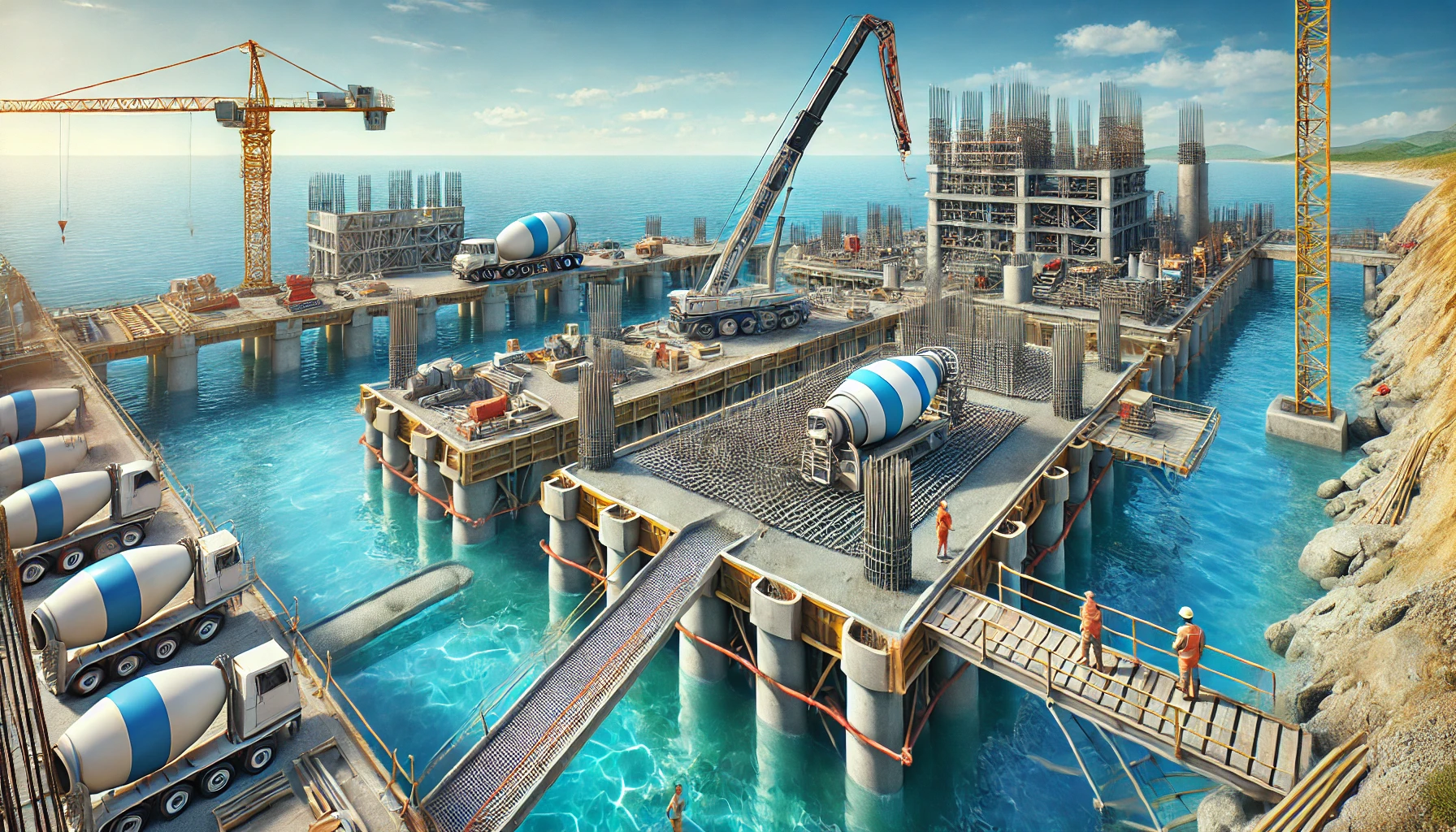Fly Ash Geopolymer Concrete: Paving the Way for Corrosion-Resistant Marine Structures
The study highlights the potential of fly ash geopolymer concrete as a durable and sustainable solution for repairing and retrofitting marine infrastructure, offering superior resistance to chloride-induced corrosion compared to traditional concrete. It also emphasizes the need for further research to optimize its application and long-term performance.

A study by researchers from Curtin University Malaysia, Universiti Malaysia Perlis, Liverpool John Moores University, University of Plymouth, and Xi’an Jiaotong Liverpool University, delves into the promising potential of using fly ash geopolymer concrete to tackle the pervasive issue of corrosion in marine infrastructure. Corrosion, particularly in reinforced concrete, is a significant concern due to the presence of chloride ions in seawater, which accelerates the degradation of these structures. Traditional concrete, although widely utilized for its availability and cost-effectiveness, is prone to such deterioration, necessitating the exploration of alternative materials that can offer better resistance to the harsh marine environment.
The Promise of Fly Ash Geopolymer Concrete
Fly ash, a byproduct of coal combustion, emerges as a key component in geopolymer concrete, largely due to its rich content of amorphous silica and alumina. These elements are crucial in the geopolymerization process, which forms a strong and durable binder within the concrete matrix. This binder significantly enhances the mechanical strength and impermeability of the concrete, making it particularly resistant to the ingress of chloride ions, a major cause of corrosion in marine settings. The paper underscores that geopolymer concrete, especially when utilizing fly ash, offers a viable solution to the challenges posed by the marine environment, potentially providing a longer service life and better protection against corrosion compared to traditional Portland cement concrete.
Superior Performance in Marine Environments
The review synthesizes findings from various studies that have explored the application and performance of fly ash geopolymer concrete in marine environments. These studies consistently highlight the superior properties of geopolymer concrete, including its enhanced compressive strength and lower chloride permeability. The dense microstructure of geopolymer concrete, resulting from the effective integration and interaction of fly ash particles, contributes to its reduced porosity, which is a critical factor in improving its resistance to chemical attacks from seawater. This makes fly ash geopolymer concrete a particularly attractive option for repairing and retrofitting marine infrastructure, where the durability and longevity of materials are paramount.
Challenges in Consistency and Safety
However, the paper also acknowledges the challenges and limitations associated with the use of geopolymer concrete. One notable issue is the variability in the properties of fly ash, which can differ significantly depending on its source and composition. This variability can affect the consistency and performance of the resulting concrete, posing a challenge for standardization and widespread adoption. Additionally, the geopolymerization process typically requires the use of alkaline activators, such as sodium hydroxide, which are caustic and require careful handling to ensure worker safety and environmental protection. These factors highlight the need for further research to optimize the production and application of geopolymer concrete, ensuring its reliability and safety in marine environments.
Long-Term Durability Under Scrutiny
Another important aspect discussed in the review is the ongoing research into the long-term performance of fly ash geopolymer concrete in marine environments. While initial studies have shown promising results, the durability of this material over extended periods of exposure to seawater and other harsh conditions is still being investigated. The paper calls for more extensive and long-term studies to fully understand the behavior and performance of geopolymer concrete in real-world marine settings. This includes examining the material's resistance to other forms of degradation, such as freeze-thaw cycles and carbonation, which are also significant concerns in marine infrastructure.
A Sustainable Future for Marine Construction
Despite these challenges, the review is optimistic about the future of fly ash geopolymer concrete as a sustainable and effective solution for marine infrastructure. The material's potential to reduce the environmental impact of construction, particularly through the recycling of industrial waste like fly ash, aligns with the growing emphasis on sustainability in the construction industry. Geopolymer concrete not only offers a way to enhance the durability and longevity of marine structures but also contributes to reducing carbon dioxide emissions, a critical consideration in the fight against climate change. The paper concludes by emphasizing the need for continued research and development in this field, suggesting that with the right advancements, geopolymer concrete could become a mainstream material in marine construction, providing a robust and environmentally friendly alternative to traditional concrete. This could lead to significant improvements in the resilience and sustainability of marine infrastructure, addressing the critical issue of corrosion while also supporting global efforts to reduce the environmental footprint of construction activities.
- FIRST PUBLISHED IN:
- Devdiscourse










